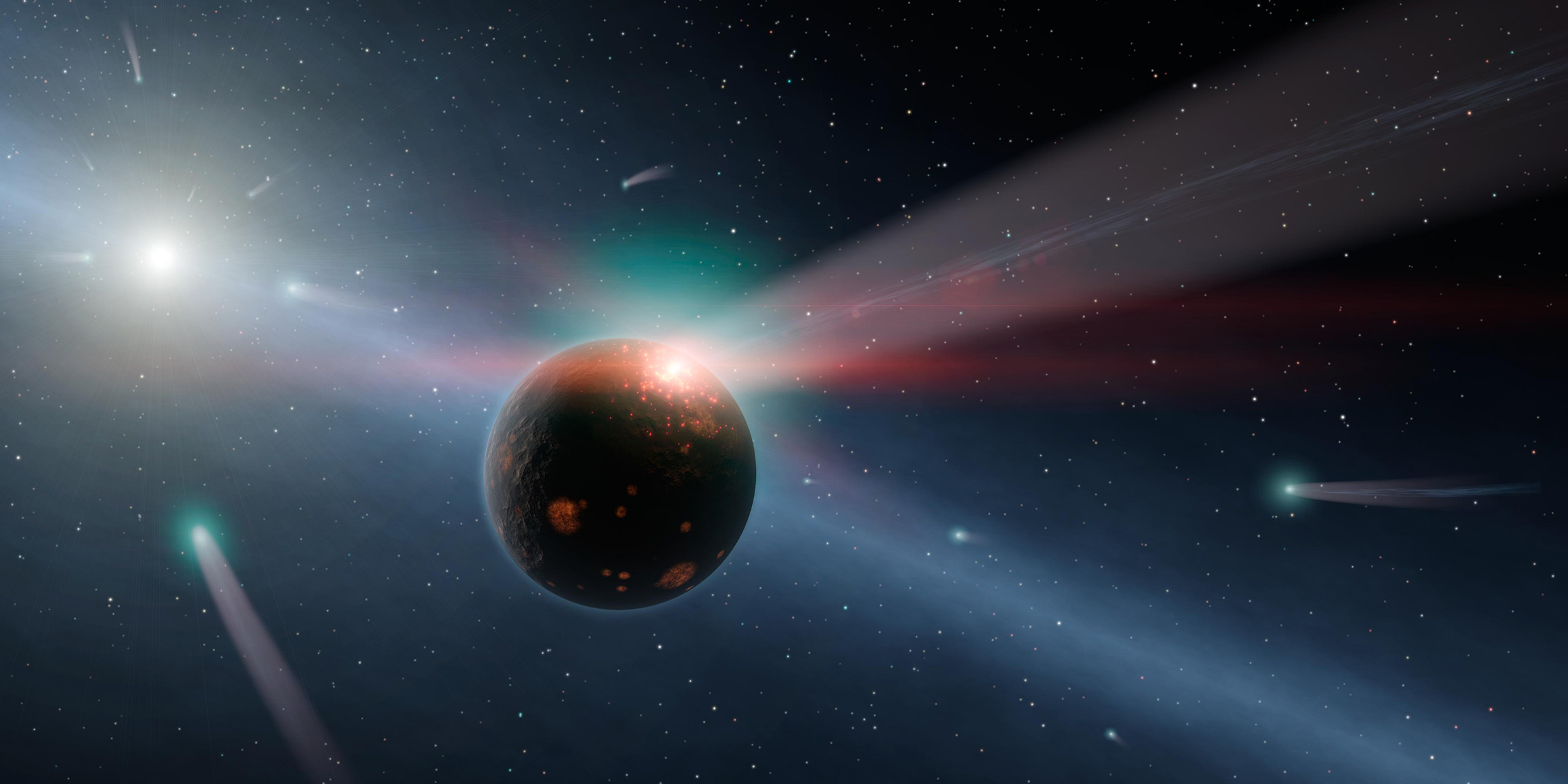Originally published 22 April 1985
Gershwin said it: I got rhythm. Let’s add to that: All God’s creatures got rhythm. Every bird in the air and fish in the sea got rhythm. There are daily rhythms: Roosters grow at sunrise and bats fly at dusk. There are annual rhythms: Ferns unfurl their fronds in the spring and trees go gaudy with color in the fall. And there are monthly rhythms: The moon raises tides in the sea and inspires periodic lunacy and romance.
Recently, scientists have begun to suspect that there may be even longer-term rhythms in the history of the Earth. In early 1984, biologists D. M. Raup and J. J. Sepkoski pointed out what appears to be a 26-million-year rhythm in the extinctions of marine organisms, as revealed in the fossil record. Their work inspired speculation about the cause of such a cycle.
In a recent issue of Science, Michael Rampino and Richard Stothers of the NASA Goddard Institute for Space Studies take this controversial issue a step further. They present corroborating evidence for the 26-million-year cycle, which they assert is actually a 33-million-year cycle. And they propose another rhythm in Earth history, a geological cycle with a period of 260 million years.
Search for cycles
Rampino and Stothers searched the geological record of the past for evidence of cycles. They used fossil data for extinctions of marine organisms. They looked for episodes of intense geological activity: mountain building, sea-floor spreading, and the intrusion of deep mantle materials into continental rocks. They considered variations of sea level. And they considered the frequencies at which the Earth’s magnetic field has reversed polarity, as recorded in the fossil magnetism of rocks. Out of these diverse data, two rhythms consistently emerged: one was a sharply defined cycle of 33 million years; the other, a broader cycle with a period of about 260 million years.
But what could punctuate the Earth’s history on such a global scale, affecting, apparently, geological activity, climate, and life? The answer, according to Rampino and Stothers, is the periodic bombardment of the Earth by comets. The bombardments impart enough energy to the planet to trigger geological and climatic disturbances.
To support their theory, Rampino and Stothers collected data on the ages of impact craters on the Earth’s surface. The cratering appears to be episodic, they claim, with a cycle time of approximately 33 million years.
And what could cause the Earth to be rhythmically showered with rock from the sky, enough rock to blast craters and dramatically alter Earth history? The answer, say Rampino and Stothers, lies in the way the Solar System moves through the Milky Way galaxy.
A galactic orbit
With billions of other stars, the Sun orbits the nucleus of the galaxy. As it orbits, it moves up and down with a wavelike motion, passing through the flat central plane of the galaxy every 33 million years. Interstellar clouds of dust and gas tend to be concentrated in the central plane of the galaxy: thus, every 33 million years, the Solar System is more likely to encounter a major cloud of dust and gas. The gravitational effect of such a cloud might disturb the halo of comets that surrounds the Solar System, sending many of the comets streaming inward toward the Sun, and a few to inevitable collision with the Earth…with dire consequences for life.
Rampino and Stothers are less willing to speculate about the cause of the 260-million-year geological cycle (if such a cycle exists), but they are inclined to believe that the cycle is related to the so-called galactic year, the time it takes the Solar System to orbit the center of the Milky Way galaxy.
This whole matter of rhythms in Earth history is highly controversial, and relies on the statistical analysis of limited amounts of uncertain and “noisy” data. Many astronomers and geologists take vigorous issue with the conclusions of Rampino and Stothers. But there is a strong tendency in science toward catastrophic explanations for natural events.
This tendency toward catastrophic explanations in science is one of the most significant philosophical developments of our time. In the new science, continents collide, stars explode, and species emerge virtually overnight. And (maybe) the Solar System weaves its way up and down through the central plane of the galaxy, rhythmically encountering clouds of material that wreak havoc on Earth.
Even now, the Solar System is passing through the galaxy’s central plane, although temporarily in a pocket of relatively clear space. If Rampino, Stothers, and their fellow catastrophists are right, we are presently in a quiet interlude of what should be a time of catastrophe. Within a few million years the Earth may be in for another episode of violence.



